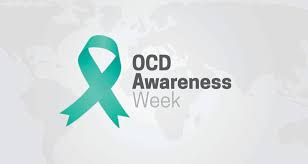
We’ve all been there: sweat dripping, legs burning, eyes glued to that little digital display on the treadmill, watching those calorie numbers tick upwards. It’s a satisfying feeling, a tangible measure of our hard work. But what if those numbers were lying to us?
While treadmills are fantastic tools for cardiovascular fitness, the accuracy of their built-in calorie counters is a topic shrouded in debate. Let’s dive deep into the mechanics behind these counters and uncover the truth about how accurately they reflect your actual calorie burn.
The Science (or Lack Thereof) Behind Treadmill Calorie Counters
Most treadmills estimate calorie burn based on a few key factors:
- Speed and incline: The faster you run and the steeper the incline, the more calories you’re assumed to be burning. This makes intuitive sense, as your body has to work harder.
- Duration: Longer workouts naturally lead to higher calorie expenditure.
- Preset formulas: Treadmills rely on generalized formulas, often based on metabolic equivalents (METs), which represent the energy cost of various activities. These formulas are often calibrated for an “average” individual, which is where the problem lies.
Why Those Numbers Might Be Inflated
The truth is, those calorie readings on your treadmill console should be taken with a grain of salt. Here’s why:
- The “Average” Person Fallacy: Treadmill formulas often assume a standardized body weight, age, and fitness level. If you deviate from this “average,” the calorie count may be inaccurate. For instance, a heavier person will generally burn more calories than a lighter person at the same speed and incline.
- Ignoring Individual Factors: Factors like body composition (muscle mass vs. fat), genetics, and even hormonal fluctuations can influence calorie expenditure. Treadmills can’t account for these individual nuances.
- Handrail Reliance: Holding onto the handrails reduces the intensity of your workout, meaning you burn fewer calories. However, the treadmill doesn’t know you’re getting a little assistance.
- Inconsistent Calibration: Not all treadmills are created equal. Calibration can vary between manufacturers and even between different models, leading to discrepancies in calorie calculations.
Read More Also: Quick and Easy Ways to Clean Your Microwave Inside and Out
How Far Off Can These Estimates Be?
Studies suggest that treadmill calorie counters can overestimate calorie burn by up to 20% or even more. While this might seem insignificant at first, it can add up over time, potentially hindering your weight loss or fitness goals.
Tips for More Accurate Calorie Tracking
Don’t despair! While treadmill calorie counters aren’t perfect, you can still get a reasonable estimate of your calorie burn with a few adjustments:
- Input your weight: Many treadmills allow you to enter your weight, which helps refine the calorie calculation.
- Ditch the handrails: Unless you need them for balance, try to avoid holding onto the handrails. This ensures you’re working at the intended intensity.
- Consider a heart rate monitor: Heart rate monitors provide a more personalized measure of effort and calorie burn based on your individual physiological response.
- Use external trackers: Fitness trackers and smartwatches often incorporate more sophisticated algorithms and sensors to estimate calorie expenditure.
- Don’t solely rely on the numbers: Focus on the overall intensity and duration of your workout rather than obsessing over the calorie count.
Beyond Calories: The Bigger Picture
It’s important to remember that calorie burn is just one piece of the fitness puzzle. While tracking calories can be helpful for weight management, it shouldn’t be your sole focus.
Concentrate on the overall benefits of your treadmill workouts:
- Improved cardiovascular health: Treadmills are excellent for strengthening your heart and lungs.
- Increased endurance: Regular treadmill sessions can boost your stamina and endurance.
- Stress reduction: Exercise, including treadmill running, is a great way to relieve stress and improve mood.
- Convenience and control: Treadmills offer a convenient way to exercise in a controlled environment, regardless of the weather.
The Bottom Line
While treadmill calorie counters can provide a general idea of your calorie expenditure, they are not infallible. By understanding their limitations and utilizing alternative tracking methods, you can gain a more accurate picture of your progress.
Ultimately, the most important thing is to enjoy your workouts and reap the numerous health benefits that treadmills offer. So, lace up your shoes, hit the treadmill, and focus on feeling good – the calorie count will take care of itself (within a reasonable margin of error, of course!)





